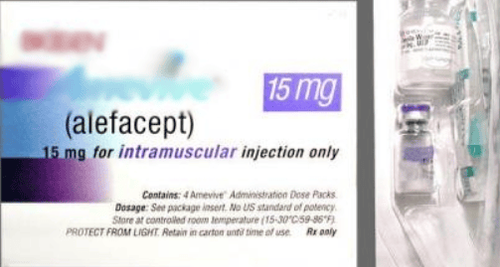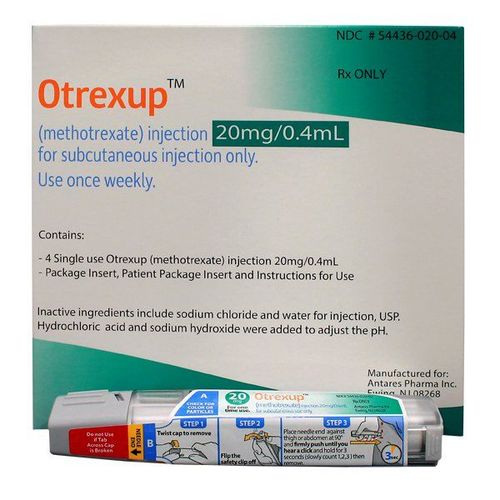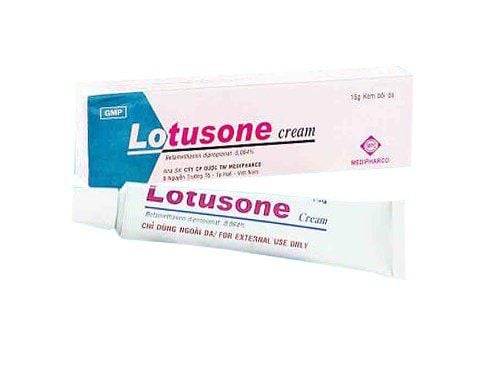This is an automatically translated article.
Cyclosporine medicine has the main ingredient Cyclosporine. This is an immunosuppressive drug, made in the form of capsules containing liquid, solution, syringe for intravenous infusion.
1. Uses of the drug Cyclosporine
What is Cyclosporine? Cyclosporine is an immunosuppressive drug whose active ingredient is Cyclosporine. Cyclosporine is a potent immunosuppressive agent with specific effects on lymphocytes (mainly T lymphocytes), inhibiting the cell-mediated immune response. Unlike other cytotoxic immunosuppressants, cyclosporine has little effect on bone marrow.
Cyclosporine is indicated in the following cases:
Combined use of Cyclosporine with corticosteroids to prevent rejection of kidney, liver and heart transplants. In addition, the drug is also used to prevent heart-lung and pancreatic transplant rejection, to prevent rejection after bone marrow transplantation, to prevent graft-versus-recipient reactions; Treatment of advanced rheumatoid arthritis in patients with poor response to methotrexate. Cyclosporine can be used in combination with methotrexate for rheumatoid arthritis patients who have not progressed on methotrexate alone; Treatment of disabling widespread plaque psoriasis in which at least 1 systemic therapy such as methotrexate has not been effective or in whom other systemic therapies are contraindicated or intolerable; Treatment of nephrotic syndrome due to diseases of the glomeruli. On the other hand, the use of Cyclosporine is contraindicated for the following groups of subjects:
People with hypersensitivity to Cyclosporine or other components of the drug; People with rheumatoid arthritis and psoriasis have impaired kidney function, uncontrolled hypertension or other malignancies.
2. How to take Cyclosporine
Cyclosporine is administered orally as a regular, emulsion or intravenous infusion. The regular thnogo form and the emulsion are not bioavailable and should not be used interchangeably without the prior approval of a physician. The oral form of Cyclosporine should be administered at a fixed time of day, in relation to meals. Oral liquid can be mixed with milk or fruit juice (except grapefruit juice) right before drinking for easy drinking.
3. Cyclosporine dosage
3.1 In adults The usual adult dose is as follows:
Starting dose: Usually 10 - 15 mg/kg, orally once, 4 - 12 hours before organ transplantation. Followed by a dose of 10-15mg/kg/day for 1-2 weeks after surgery. Then reduce 5% weekly to maintenance dose of 2 - 6mg/kg/day (blood concentration and renal function should be monitored for dose adjustment); Cyclosporine dosage will be lower if used with other immunosuppressive drugs (eg corticosteroids); In patients intolerant of oral cyclosporine, intravenous infusion at a dose equal to 1⁄3 of the oral dose should be given slowly over a minimum of 2 to 6 hours. The drug is diluted with 0.9% sodium chloride solution or with 5% glucose, from 5% to a 0.05–0.25% solution. For the prevention of anaphylactic reactions, it is advisable to switch to oral medications as soon as possible. Dosage in bone marrow transplantation, prevention and treatment of graft-versus-recipient disease:
The starting dose of intravenous infusion is 3-5mg/kg/day, used 1 day before transplantation and then continued for up to 2 weeks. Then gradually switch to oral 12.5mg/kg/day for 3-6 months; Then gradually reduce the oral dose, can be taken for up to 1 year after transplantation (or initially at a dose of 12.5 - 15mg/kg/day). Dosage in the treatment of psoriasis:
Initial oral dose is 2.5mg/kg/day, maximum dose is 4mg/kg/day; Reduce dose gradually to the lowest effective dose; Discontinue treatment if the patient does not respond to the maximum dose within 6 weeks. Dosage in the treatment of rheumatoid arthritis:
Initial oral dose is 2.5mg/kg/day, divided into 2 times, for 6-8 weeks; If the patient's clinical response is inadequate, the dose can be gradually increased to a maximum of 4 mg/kg/day; Discontinue treatment with the drug if the patient has no response after 3-4 months of taking the drug. Dosage in the treatment of nephrotic syndrome due to diseases of the glomeruli:
The recommended oral dose is 5mg/kg/day, divided into 2 times when renal function is normal, unless proteinuria is present; If the patient has renal impairment, the initial dose should not exceed 2.5 mg/kg/day; The dose of Cyclosporine should be adjusted according to the individual patient, depending on the proteinuria and plasma creatinine (but do not exceed the recommended dose). With maintenance dose, gradually reduce to the lowest effective dose; If after 3 months of treatment with Cyclosporine, there is no effect, the drug should be discontinued. 3.2 In other subjects Children: Dosage in children with nephrotic syndrome due to glomerular disease is 6mg/kg/day when renal function is normal; Patients with renal failure: Do not use Cyclosporine for patients with renal failure, except in case of nephrotic syndrome; Patients with hepatic impairment: Consider reducing the dose of Cyclosporine in patients with severe hepatic impairment; Elderly: Use with caution and start with the lowest effective dose. Overdosing on Cyclosporine often causes symptoms similar to side effects but in a more severe way. The drug may cause transient liver and kidney toxicity but is reversible upon elimination/discontinuation. When taking an acute overdose of Cyclosporine, the patient should be cleared of the stomach by inducing vomiting (useful within 2 hours of taking it). If the patient is comatose, has seizures, has lost pharyngeal reflexes, gastric lavage can be performed (if available). In addition, it is necessary to conduct resuscitation and symptomatic treatment. When an overdose of Cyclosporine occurs, the drug should be stopped for a few days or started on alternate days until the patient's health is stable.
If you forget to take a dose of Cyclosporine, you should take it as soon as you remember. If it is almost time for your next dose, skip the missed dose and take your next dose at the scheduled time.
4. Cyclosporine side effects
Some side effects patients may experience when taking Cyclosporine medicine include:
Serious side effects: Allergic reactions (rash, difficulty breathing, swelling of lips, face, tongue, throat), fever, sweating, chills, flu symptoms, sores in the mouth and throat, body aches, weight loss, changes in mental status, ability to talk or walk, decreased vision, easy bruising or discharge blood, confusion, pale skin, weakness, feeling light-headed or short of breath, trouble concentrating, heart palpitations, lower back or side pain, burning pain when urinating, blood in your urine, urinating less than usual urinary retention, rapid weight gain, hot or red skin, vomiting, bloody diarrhea, seizures (convulsions), high potassium (symptoms include slow heartbeat, weak pulse, numbness, muscle weakness corns), nausea, itchy skin, loss of appetite, upper abdominal pain, dark urine, yellowing of the skin or eyes, clay-colored stools, severe high blood pressure (headache, ringing in the ears, blurred vision, chest pain, anxiety). quiet, shortness of breath, irregular heartbeat); Less serious side effects: Swollen or sore gums, mild headache, mild diarrhea, constipation, upset stomach, tremors, muscle spasms, tingling or numbness, If you experience any of the side effects of Cyclosporine. , the patient should notify the doctor for advice and appropriate advice.
5. Be careful when using Cyclosporine
Some notes patients need to remember before and while using Cyclosporine drugs include:
Use Cyclosporine only under the supervision of doctors with experience in immunosuppressive therapy. Treatment at the beginning or when there is a major change in therapy should be carried out in hospitals with adequate testing and resuscitation facilities; Although Cyclosporine can be used in combination with corticosteroids, it is not recommended to use Cyclosporine with other immunosuppressive agents because of the increased risk of bacterial infections and lymphomas; Because of the risk of anaphylaxis, cyclosporine should be given intravenously only to patients who are intolerant of oral medications. Patients receiving intravenous infusion should be carefully monitored for allergic manifestations. During intravenous infusion of Cyclosporine, respiratory support measures, resuscitation and anaphylactic agents should be readily available; When necessary (e.g., altered absorption of oral drugs), the dose should be adjusted to avoid toxicity due to high blood or plasma concentrations, and to prevent graft rejection due to low drug concentrations. Monitoring of cyclosporine in blood or plasma is especially important in allogeneic liver transplant recipients (because drug absorption in patients can be erratic); Patients treated with Cyclosporine are at increased risk for infections caused by viruses, bacteria, fungi and protozoa, including opportunistic infections; Patients treated with Cyclosporine have an increased risk of lymphoma and other malignancies (especially of the skin). Patients are advised to avoid excessive UV light exposure; Cyclosporine can cross the placenta, so pregnant women only use the drug when absolutely necessary, with a doctor's prescription; Cyclosporine can pass into breast milk, causing adverse effects on the nursing infant, so if the mother must take Cyclosporine, breast-feeding should be avoided.
6. Cyclosporine drug interactions
Some Cyclosporine drug interactions include:
Drugs that reduce Cyclosporine levels include: Phenobarbital, carbamazepine, phenytoin, rifampin, isoniazid; Drugs that increase the concentration of Cyclosporine include: Itraconazole, ketoconazole, cin, diltiazem, azithromycin, clarithromyverapamil erythromycin, fluconazole, nicardipine; Drugs that increase the nephrotoxicity of Cyclosporine include: Acyclovir, aminoglycoside, amphotericin B; Concomitant use of Cyclosporine with lovastatin may cause side effects such as myositis, myalgia, rhabdomyolysis or acute renal failure; Concomitant use of Cyclosporine with nifedipine increases the risk of gingival hyperplasia; Concomitant use of Cyclosporine with other immunosuppressive agents increases the risk of bacterial infections and lymphomas; Cyclosporine concentrations in biological fluids can be altered by food (eg, grapefruit juice) effects on liver cytochrome P450 3A; Solvent castor oil, polyoxyl or polysorbate-80 used to prepare Cyclosporine preparations can dissolve DEHP - a possible carcinogen - from PVC containers, lines. At present, the most commonly used solvent is grain oil or ethanol. When using Cyclosporine, patients should follow all of their doctor's instructions about the dose and how to take it. In case of unusual symptoms or have any questions, the patient should consult a doctor for appropriate advice.
Please dial HOTLINE for more information or register for an appointment HERE. Download MyVinmec app to make appointments faster and to manage your bookings easily.













